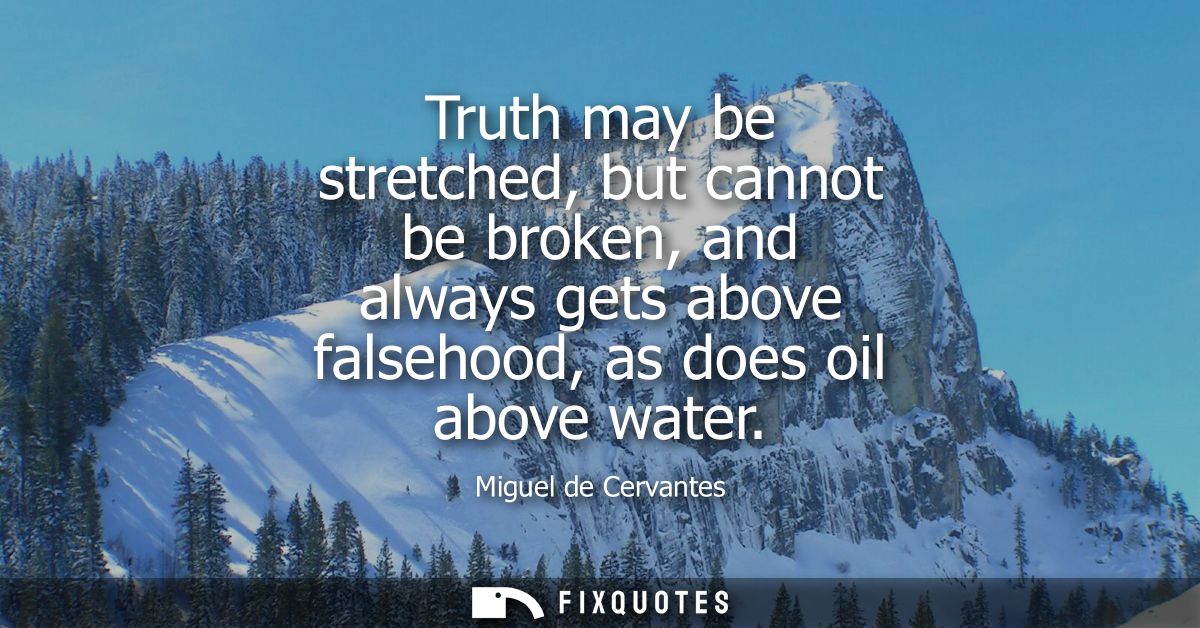"Truth may be stretched, but cannot be broken, and always gets above falsehood, as does oil above water"
About this Quote
Miguel de Cervantes, in stating that truth may be stretched, but cannot be broken, highlights the enduring and resilient nature of truth itself. Human beings, through cleverness, manipulation, or selective narration, may try to distort or twist facts to suit their purposes. Lies, exaggerations, or omissions may temporarily obscure reality, causing confusion or uncertainty. Yet, despite these attempts, the essence of truth remains intact, unbroken beneath the layers of deception.
The analogy of oil rising above water illustrates the natural tendency of truth to assert itself over falsehood. No matter how much oil is stirred into water, it inevitably separates and floats to the top. This reflects the idea that, although falsehood may cover or cloud the truth, it cannot suppress it indefinitely. Given time and the right circumstances, the truth will re-emerge and become apparent. The image is especially powerful, as oil and water are fundamental elements that do not mix; their separation is predictable and constant. So too, truth stands apart from falsehood, unable to fully merge with or be consumed by it.
Cervantes suggests deeper ethical and philosophical implications as well. The enduring quality of truth is not just a matter of observable phenomena, but a principle of human morality and social order. Attempts to stretch the truth may cause temporary harm or benefit, but they ultimately fail to undermine the reality of the situation. Truth’s inevitability reinforces the importance of honesty and integrity, as falsehoods are bound to be exposed.
The quote also contains a sense of hope. Even in times when lies seem to dominate, there’s underlying confidence that truth will surface. This serves as encouragement for those seeking justice or transparency, reassuring them that their quest is not futile. Ultimately, Cervantes affirms the perennial and self-evident supremacy of truth over all attempts at distortion.
About the Author

